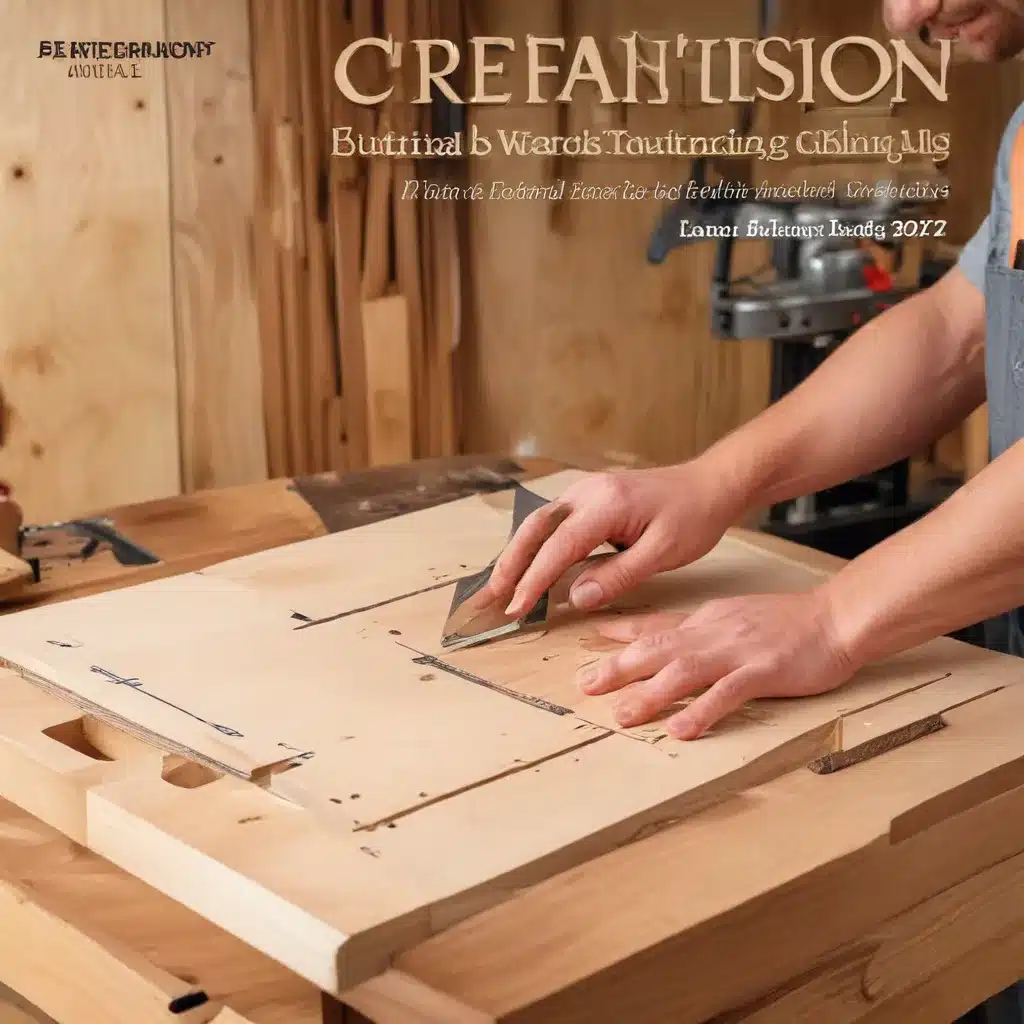
As an experienced woodworker and craftsman, I’ve had the privilege of honing my skills over the years, transforming raw timber into functional and beautiful creations. At the heart of every successful woodworking project lies a mastery of essential cutting techniques. Whether you’re a seasoned pro or just starting your woodworking journey, understanding and practicing these fundamental skills will elevate your craftsmanship to new heights.
Measuring and Marking: The Foundation of Precision
Precise measurements and accurate markings are the bedrock of any well-executed woodworking project. Without this foundation, even the most intricate designs can fall apart. As a seasoned woodworker, I’ve learned that investing in high-quality measuring tools is paramount. A reliable tape measure, combination square, and marking gauge should be staples in your toolkit.
When it comes to measuring, consistency is key. Always measure from the same reference point, and use the same units of measurement (metric or imperial) to ensure accuracy throughout your project. And don’t forget the importance of a sharp, fine-point pencil for making clear, precise markings. These seemingly small details can make all the difference in the final outcome.
Mastering Cutting Techniques
With your measurements and markings in place, it’s time to tackle the art of cutting. The right saw for the job can make all the difference in the world. Familiarize yourself with the various types of saws, from handsaws and circular saws to jigsaws and bandsaws, and learn how to wield them with precision.
When using a handsaw, focus on maintaining a controlled, straight cut. Let the weight of the saw do the work, and keep a steady rhythm as you slice through the wood. For curved cuts, the jigsaw is your best friend. Practice following intricate patterns and making clean, precise cuts with this versatile tool.
Remember, safety should always be your top priority. Wear protective gear, such as goggles and a dust mask, and keep your work area clear of any distractions. Maintaining sharp, well-tuned tools is also crucial for clean, efficient cuts.
Unlocking the Secrets of Joinery
Joinery is where the artistry of woodworking truly shines. From the classic mortise and tenon joint to the intricate dovetail, mastering various joining techniques is essential for creating sturdy, visually appealing structures.
Cutting precise mortises and crafting perfect-fitting tenons requires skill and patience, but the reward is a joint that can withstand the test of time. Dovetail joints, with their interlocking patterns, are a hallmark of fine craftsmanship. While they may seem daunting at first, with practice and the right techniques, you can elevate your joinery to new heights.
Beyond these more complex joinery methods, don’t overlook the simplicity and effectiveness of basic fastening techniques, such as the use of screws, nails, dowels, and biscuits. These versatile tools can simplify your projects while still delivering reliable, long-lasting results.
Shaping and Sculpting: The Art of Planing
Once your pieces are cut and joined, the journey of woodworking transforms into an artistic pursuit. Shaping and sculpting the wood allows you to infuse your personal touch and bring your vision to life.
The humble hand plane is a woodworker’s best friend when it comes to smoothing and shaping. From the versatile jack plane to the refined smoothing plane, each type of plane serves a specific purpose. Mastering the techniques of planing, whether it’s flattening a surface or creating gentle curves, will elevate the quality and aesthetics of your work.
Rasps and files are also invaluable tools in the realm of shaping. These handy instruments allow you to craft intricate details and contours, turning a simple piece of wood into a work of art.
Drilling and Boring: The Holes That Hold It All Together
No woodworking project is complete without the strategic placement of holes. Whether you’re creating joinery or adding functional elements, the ability to drill and bore with precision is essential.
Selecting the right drill bit for the task at hand is crucial. From brad point bits for clean, precise holes to Forstner bits for large, flat-bottomed openings, understanding the capabilities of each type of bit will ensure your holes are perfectly executed.
Maintaining proper technique is also key. Keep a steady hand, secure the wood firmly, and adjust your speed to suit the material and bit size. Drilling with care and attention to detail will result in clean, accurate holes that contribute to the overall strength and integrity of your project.
Sanding and Finishing: The Final Touches
As you near the completion of your woodworking project, the sanding and finishing stages become the cherry on top. A smooth, meticulously sanded surface is the foundation for a breathtaking final finish.
Start with coarser grit sandpapers and gradually work your way up to finer grits, taking the time to ensure an even, consistent surface. Sanding is a patience-testing but rewarding process that transforms rough-hewn wood into a silky-smooth canvas for your finishing touches.
Sealing and staining the wood are the final steps in elevating your creation. Carefully selecting the right finish, whether it’s a durable varnish, a rich stain, or a natural oil, can enhance the natural beauty of the wood and protect it for years to come.
Remember, every woodworking project is a journey, and mastering these essential cutting techniques is just the beginning. As you continue to hone your skills, you’ll discover the true joy of transforming raw materials into functional and visually stunning works of art.
At https://woodcraftparts.net/, we celebrate the art of woodworking and the dedication of craftsmen like you. Whether you’re a seasoned pro or just starting your journey, we’re here to support you with high-quality tools, materials, and a community of like-minded enthusiasts. Embrace the precision, creativity, and satisfaction that come with every cut, every joint, and every final touch. Happy crafting!

